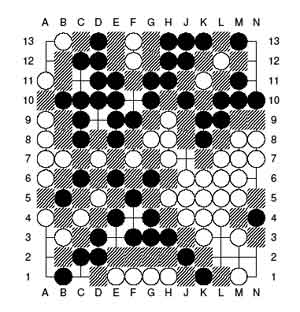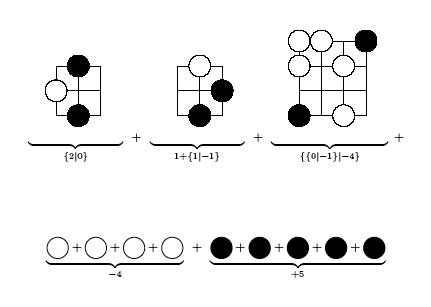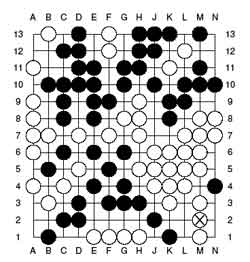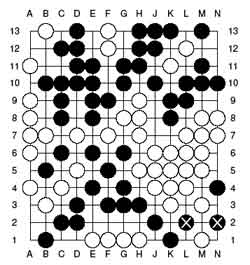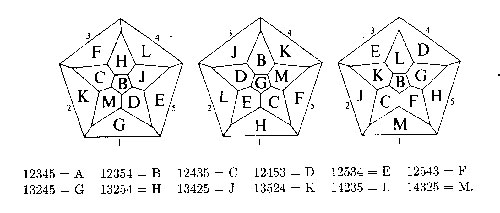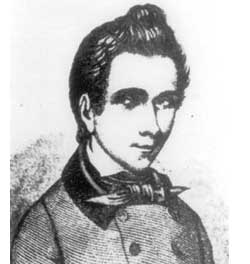
Evariste Galois (1811-1832) must rank pretty high on the all-time
list of moving last words. Galois was mortally wounded in a duel he
fought with Perscheux d\’Herbinville on May 30th 1832, the reason for
the duel not being clear but certainly linked to a girl called
Stephanie, whose name appears several times as a marginal note in
Galois\’ manuscripts (see illustration). When he died in the arms of his
younger brother Alfred he reportedly said “Ne pleure pas, j\’ai besoin
de tout mon courage pour mourir ‚àö‚Ć 20 ans”. In this series I\’ll
start with a pretty concrete problem in Galois theory and explain its
elegant solution by Aidan Schofield and Michel Van den Bergh.
Next, I\’ll rephrase the problem in non-commutative geometry lingo,
generalise it to absurd levels and finally I\’ll introduce a coalgebra
(yes, a co-algebra…) that explains it all. But, it will take some time
to get there. Start with your favourite basefield $k$ of
characteristic zero (take $k = \mathbb{Q}$ if you have no strong
preference of your own). Take three elements $a,b,c$ none of which
squares, then what conditions (if any) must be imposed on $a,b,c$ and $n
\in \mathbb{N}$ to construct a central simple algebra $\Sigma$ of
dimension $n^2$ over the function field of an algebraic $k$-variety such
that the three quadratic fieldextensions $k\sqrt{a}, k\sqrt{b}$ and
$k\sqrt{c}$ embed into $\Sigma$? Aidan and Michel show in \’Division
algebra coproducts of index $n$\’ (Trans. Amer. Math. Soc. 341 (1994),
505-517) that the only condition needed is that $n$ is an even number.
In fact, they work a lot harder to prove that one can even take $\Sigma$
to be a division algebra. They start with the algebra free
product $A = k\sqrt{a} \ast k\sqrt{b} \ast k\sqrt{c}$ which is a pretty
monstrous algebra. Take three letters $x,y,z$ and consider all
non-commutative words in $x,y$ and $z$ without repetition (that is, no
two consecutive $x,y$ or $z$\’s). These words form a $k$-basis for $A$
and the multiplication is induced by concatenation of words subject to
the simplifying relations $x.x=a,y.y=b$ and $z.z=c$.
Next, they look
at the affine $k$-varieties $\mathbf{rep}(n) A$ of $n$-dimensional
$k$-representations of $A$ and their irreducible components. In the
parlance of $\mathbf{geometry@n}$, these irreducible components correspond
to the minimal primes of the level $n$-approximation algebra $\int(n) A$.
Aidan and Michel worry a bit about reducedness of these components but
nowadays we know that $A$ is an example of a non-commutative manifold (a
la Cuntz-Quillen or Kontsevich-Rosenberg) and hence all representation
varieties $\mathbf{rep}n A$ are smooth varieties (whence reduced) though
they may have several connected components. To determine the number of
irreducible (which in this case, is the same as connected) components
they use _Galois descent, that is, they consider the algebra $A
\otimes_k \overline{k}$ where $\overline{k}$ is the algebraic closure of
$k$. The algebra $A \otimes_k \overline{k}$ is the group-algebra of the
group free product $\mathbb{Z}/2\mathbb{Z} \ast \mathbb{Z}/2\mathbb{Z}
\ast \mathbb{Z}/2\mathbb{Z}$. (to be continued…) A digression : I
cannot resist the temptation to mention the tetrahedral snake problem
in relation to such groups. If one would have started with $4$ quadratic
fieldextensions one would get the free product $G =
\mathbb{Z}/2\mathbb{Z} \ast \mathbb{Z}/2\mathbb{Z} \ast
\mathbb{Z}/2\mathbb{Z} \ast \mathbb{Z}/2\mathbb{Z}$. Take a supply of
tetrahedra and glue them together along common faces so that any
tertrahedron is glued to maximum two others. In this way one forms a
tetrahedral-snake and the problem asks whether it is possible to make
such a snake having the property that the orientation of the
\’tail-tetrahedron\’ in $\mathbb{R}^3$ is exactly the same as the
orientation of the \’head-tetrahedron\’. This is not possible and the
proof of it uses the fact that there are no non-trivial relations
between the four generators $x,y,z,u$ of $\mathbb{Z}/2\mathbb{Z} \ast
\mathbb{Z}/2\mathbb{Z} \ast \mathbb{Z}/2\mathbb{Z} \ast
\mathbb{Z}/2\mathbb{Z}$ which correspond to reflections wrt. a face of
the tetrahedron (in fact, there are no relations between these
reflections other than each has order two, so the subgroup generated by
these four reflections is the group $G$). More details can be found in
Stan Wagon\’s excellent book The Banach-tarski paradox, p.68-71.
